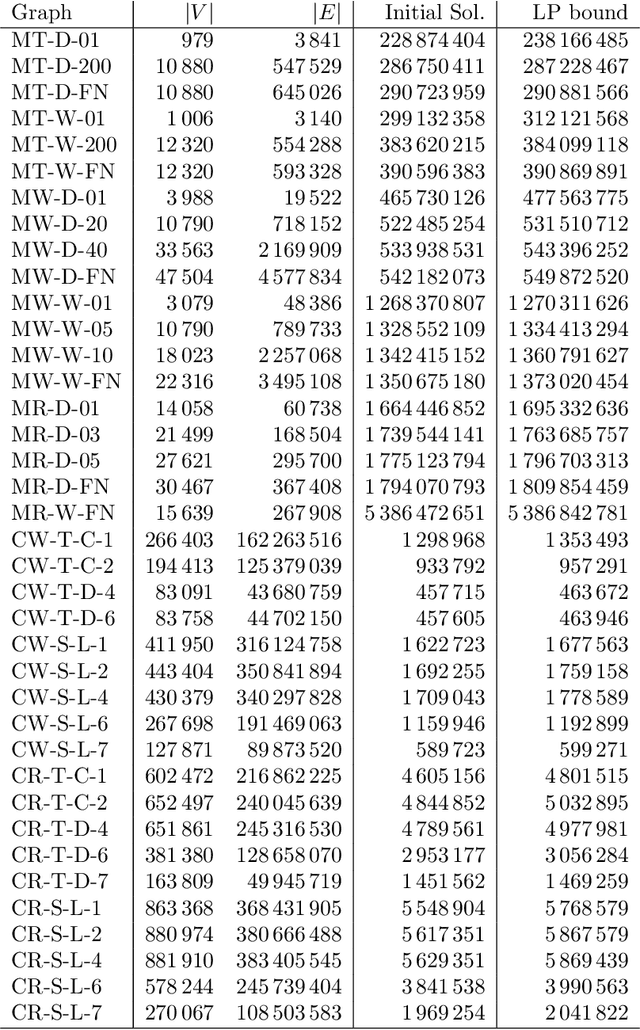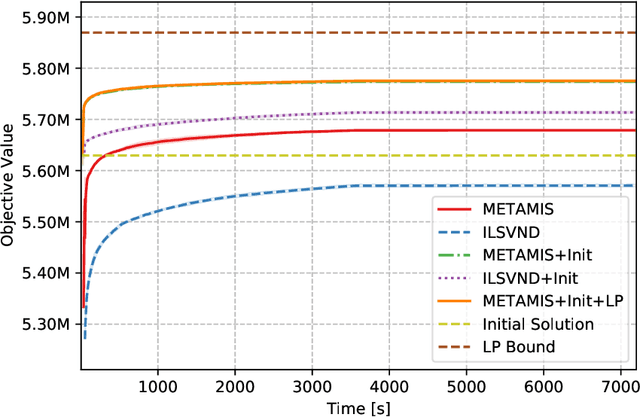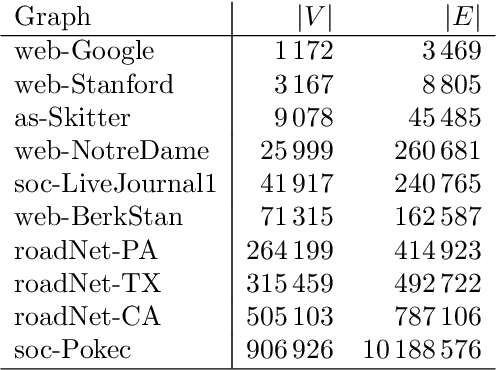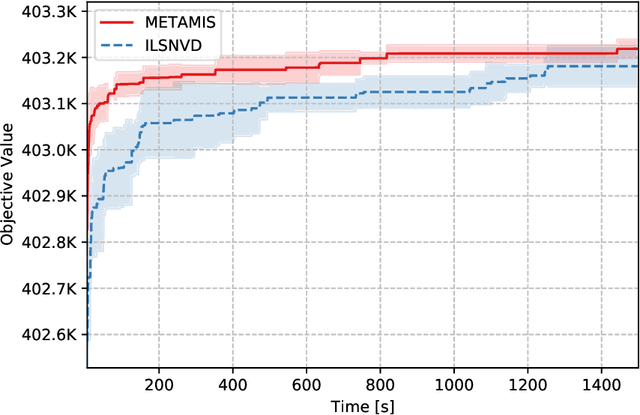Yuanyuan Dong
A Metaheuristic Algorithm for Large Maximum Weight Independent Set Problems
Mar 28, 2022



Abstract:Motivated by a real-world vehicle routing application, we consider the maximum-weight independent set problem: Given a node-weighted graph, find a set of independent (mutually nonadjacent) nodes whose node-weight sum is maximum. Some of the graphs airsing in this application are large, having hundreds of thousands of nodes and hundreds of millions of edges. To solve instances of this size, we develop a new local search algorithm, which is a metaheuristic in the greedy randomized adaptive search (GRASP) framework. This algorithm, which we call METAMIS, uses a wider range of simple local search operations than previously described in the literature. We introduce data structures that make these operations efficient. A new variant of path-relinking is introduced to escape local optima and so is a new alternating augmenting-path local search move that improves algorithm performance. We compare an implementation of our algorithm with a state-of-the-art openly available code on public benchmark sets, including some large instances with hundreds of millions of vertices. Our algorithm is, in general, competitive and outperforms this openly available code on large vehicle routing instances. We hope that our results will lead to even better MWIS algorithms.
Decentralized Baseband Processing with Gaussian Message Passing Detection for Uplink Massive MU-MIMO Systems
May 22, 2021



Abstract:Decentralized baseband processing (DBP) architecture, which partitions the base station antennas into multiple antenna clusters, has been recently proposed to alleviate the excessively high interconnect bandwidth, chip input/output data rates, and detection complexity for massive multi-user multiple-input multiple-output (MU-MIMO) systems. In this paper, we develop a novel decentralized Gaussian message passing (GMP) detection for the DBP architecture. By projecting the discrete probability distribution into a complex Gaussian function, the local means and variances iteratively calculated in each antenna cluster are fused to generate the global symbol beliefs based on the proposed message fusion rule in the centralized processing unit. We present the framework and analysis of the convergence of the decentralized GMP detection based on state evolution under the assumptions of large-system limit and Gaussian sources. Analytical results corroborated by simulations demonstrate that nonuniform antenna cluster partition scheme exhibits higher convergence rate than the uniform counterpart. Simulation results illustrate that the proposed decentralized GMP detection outperforms the recently proposed decentralized algorithms.
A Learning-Based Visual Saliency Fusion Model for High Dynamic Range Video
Mar 13, 2018



Abstract:Saliency prediction for Standard Dynamic Range (SDR) videos has been well explored in the last decade. However, limited studies are available on High Dynamic Range (HDR) Visual Attention Models (VAMs). Considering that the characteristic of HDR content in terms of dynamic range and color gamut is quite different than those of SDR content, it is essential to identify the importance of different saliency attributes of HDR videos for designing a VAM and understand how to combine these features. To this end we propose a learning-based visual saliency fusion method for HDR content (LVBS-HDR) to combine various visual saliency features. In our approach various conspicuity maps are extracted from HDR data, and then for fusing conspicuity maps, a Random Forests algorithm is used to train a model based on the collected data from an eye-tracking experiment. Performance evaluations demonstrate the superiority of the proposed fusion method against other existing fusion methods.
 Add to Chrome
Add to Chrome Add to Firefox
Add to Firefox Add to Edge
Add to Edge